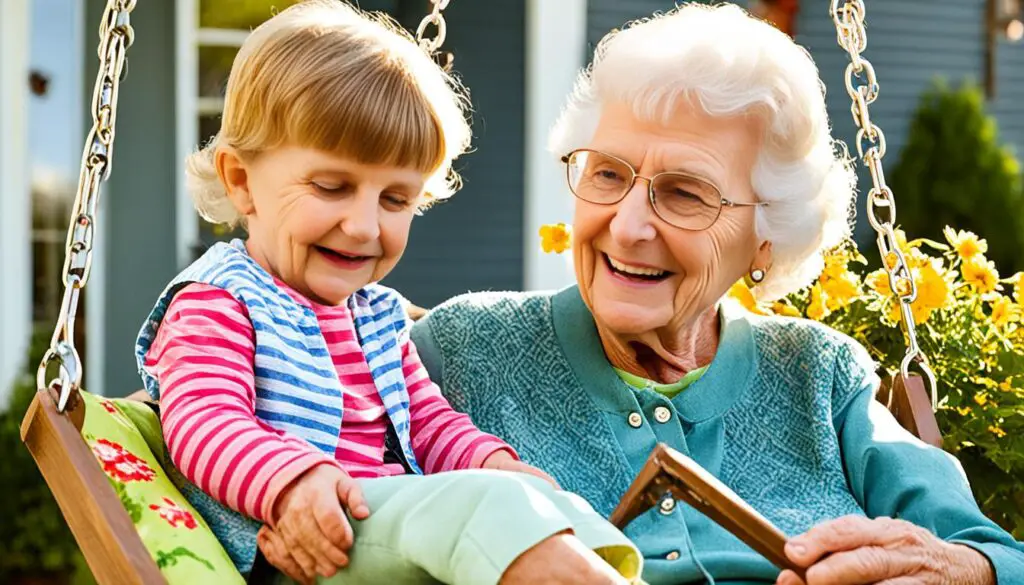The Grandparent Effect: Strengthening Bonds in Multi-Generational Homes
In today’s fast-paced world, family dynamics and support systems are evolving. Increasingly, families are embracing the benefits of multi-generational living, where grandparents play a central role in strengthening family bonds and creating a nurturing environment for all.
The presence of grandparents in a household brings a wealth of wisdom, experience, and unconditional love. Their involvement not only enriches the lives of the younger generation but also fosters a sense of connection and belonging that is crucial for emotional well-being.
Multi-generational homes offer unique opportunities for family members to bond, learn from one another, and build lasting memories. Whether it’s storytelling sessions by the fireplace, shared meals that celebrate cultural heritage, or even the simple joy of playing together, the grandparent effect is a powerful force that contributes to the overall growth and happiness of every family member.
In this article, we explore the enriching impact of intergenerational living and how it fortifies relationships, fosters growth, and nurtures the unique bond between grandparents and their grandchildren. From historical resilience to the benefits of intergenerational support, we delve into the transformative power of multi-generational homes.
Key Takeaways:
- Multi-generational homes provide a nurturing environment for families to form strong bonds.
- The grandparent effect fosters emotional well-being and a sense of belonging among family members.
- Intergenerational living offers opportunities for shared experiences, learning, and personal growth.
- Historical resilience within multi-generational households highlights the strength of family ties.
- The presence of grandparents creates a strong sense of family identity and heritage.
The Enriching Impact of Intergenerational Living
Intergenerational living in multi-generational households has a profound impact on family dynamics and relationships. One remarkable example is the experience of the Grigg family, who resided on St Michael Avenue in Keyham during World War Two.
Andy Grigg, a member of the family, shared that their street was struck by an unexploded bomb in 1941. In the face of this adversity, their family displayed remarkable resilience and strength. The War Office compensated them for the damage caused to their home, highlighting the challenges faced by families living in multi-generational households during tumultuous times.
“The bombing map from The Box museum in Plymouth reveals that our street was targeted by a raid that dropped several bombs in the area,”
This historical context underscores the importance of intergenerational living in fostering close-knit family bonds. Despite the chaos of war, the Grigg family’s unity and support for one another was a source of strength through turbulent times. Their shared experiences created a strong sense of family identity and resilience that continues to this day.
Intergenerational living allows family members of different generations to learn from each other, share wisdom and experiences, and provide emotional support. It also provides a unique opportunity for children to develop a deep appreciation for their family’s history and heritage.
Considering the enriching impact of intergenerational living, it’s clear that multi-generational households play a vital role in nurturing strong family bonds and fostering personal growth within the family unit.

Benefits of Intergenerational Living
Intergenerational living offers a multitude of benefits, including:
- Promoting a sense of belonging and family cohesion
- Creating a support system that spans multiple generations
- Facilitating the passing down of family traditions and values
- Providing a network of emotional support and guidance
- Encouraging intergenerational learning and knowledge sharing
Through intergenerational living, families can build strong foundations, maintaining a sense of historical resilience while nurturing personal growth and development. The bonds forged within multi-generational households serve as a testament to the power and beauty of intergenerational relationships.
Fortifying Relationships and Fostering Growth
The experience shared by Andy Grigg’s family underscores the resilience and adaptability that can arise from multi-generational living. During the bombing raid, his father narrowly escaped death, and the impact of the event shaped their family story. The compensation claim made by his grandparents and the items they claimed for provide a glimpse into the challenges and hardships they faced. These shared experiences and the intergenerational support within the family can help fortify relationships and foster personal growth and development.
“The resilience and adaptability that can arise from multi-generational living.”
Living through such a traumatic event together created a bond between Andy Grigg’s family members that strengthened their relationships and fueled their personal growth. The ability to overcome adversity as a family unit not only builds resilience but also provides a strong foundation for individuals to thrive.
The intergenerational support within the family was crucial in navigating the challenges they faced. The elders’ wisdom and life experiences offered guidance and comfort, while the younger members brought fresh perspectives and new ideas. Together, they created a nurturing environment that fostered growth, both individually and as a family unit.
Shared Experiences and Memories
One way intergenerational support manifests is through the sharing of experiences and memories. Andy Grigg’s family, bound by the traumatic event they endured, formed a collective memory that connected them across generations. These shared memories not only create a sense of belonging and identity but also provide valuable life lessons and insights that contribute to personal growth.
Stories of resilience, perseverance, and triumph in the face of adversity inspire younger generations to confront their own challenges with courage and determination. The wisdom passed down from older family members serves as a guiding light, offering valuable advice and support as younger individuals navigate their own paths.
| Benefits of Intergenerational Support in Family Relationships |
|---|
| Strengthened bonds within the family |
| Enhanced emotional support |
| Increased mutual understanding |
| Shared wisdom and life experiences |
| Guidance for personal growth and development |
The Power of Intergenerational Support
Intergenerational support not only fortifies relationships but also fosters personal growth and development. The wisdom and guidance offered by older family members provide a solid foundation for the younger generations to thrive. The opportunity to learn from the experiences and mistakes of their elders empowers individuals to make informed decisions and strive for their full potential.
Additionally, intergenerational support encourages independence, self-confidence, and resilience. The emotional support and understanding shared within the family provide a safety net, allowing individuals to take risks, explore new avenues, and grow as individuals.

By recognizing the power of intergenerational support, families can create an environment that nurtures growth, strengthens relationships, and celebrates the unique contributions of each family member. The bonds formed through intergenerational living become the backbone of family unity and resilience, laying the foundation for a fulfilling and meaningful life.
Conclusion
The enriching impact of intergenerational living in multi-generational homes is undeniable. The story of Andy Grigg’s family during World War Two exemplifies the historical resilience and perseverance that can emerge when families face adversity together.
In these homes, the bonds formed and strengthened among different generations foster a deep sense of support, guidance, and belonging. This nurturing environment promotes not only strong family bonds but also personal growth and development.
Moreover, multi-generational living cultivates a strong sense of family identity and heritage. The shared experiences and intergenerational connection create a rich tapestry of stories and traditions that can be passed down through generations.
By embracing the grandparent effect and choosing to live in multigenerational homes, families can reap the benefits of stronger family bonds, historical resilience, and the unique opportunities for personal growth and development that arise from intergenerational support.
FAQ
How can multi-generational homes strengthen family bonds?
Multi-generational homes provide an environment where different generations can live together, fostering strong family bonds through shared experiences, support, and guidance.
What are the benefits of intergenerational living?
Intergenerational living allows for the exchange of wisdom, knowledge, and values between generations, creating a sense of belonging and connection within the family.
How does intergenerational support contribute to personal growth and development?
Intergenerational support within multi-generational households promotes personal growth and development by providing a nurturing environment that encourages learning, resilience, and the development of life skills.
What role does the grandparent effect play in multi-generational homes?
The grandparent effect in multi-generational homes offers a unique opportunity for grandparents to pass down their wisdom, provide emotional support, and play an active role in the upbringing of younger generations.
How can multi-generational homes create a strong sense of family identity and heritage?
In multi-generational homes, shared experiences and cultural traditions can be passed down through generations, creating a strong sense of family identity and preserving family heritage.






